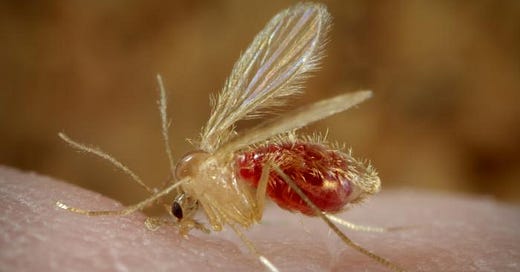Peru: 271 cases of leishmaniasis reported in La Libertad department
Health officials in La Libertad department in northwestern Peru have reported 271 leishmaniasis, or as it’s locally know, uta, in five provinces—Santiago de Chuco (the most affected), Otuzco, Sánchez Carrión, Gran Chimú and Virú.
Deputy manager of Comprehensive Health Care of the Regional Health Management of La Libertad (Geresa-LL), Víctor Alvarado Cáceres said, “Unfortunately, in recent years, we have not had the medicine, not only in the country, but internationally, it has been out of stock, but companies have started to produce it again. In 2023, there was no medicine for control, but the Ministry of Health (Minsa) brought it from other countries and in La Libertad we brought it from other regions and we have been able to treat approximately 120 patients.”
He added that, of the total of 271 affected, there are 221 who are on the waiting list for treatment and, precisely, between this Friday, August 9 and Monday, August 12, the arrival of 8,000 ampules for the uta has been confirmed, but each patient consumes around 60, which are inoculated daily.
"There are 34 people who have refused to receive treatment because it is every day”, Alvarado said.
Support this newsblog with a paid subscription or with a cup of coffee at ko-fi
Leishmaniasis is not a single disease, but a group of syndromes due to a variety of species of this parasite. They affect different populations and are related to a characteristic vector, the sandfly.
The disease can range from asymptomatic infections to those causing significant illness and death. Disease can appear on a spectrum from a single skin ulcer to destructive lesions of the face to terminal organ disease.
Leishmaniasis is found in 88 countries worldwide and is broken down between Old World and New World.
Subscribe to Outbreak News TV on YouTube
Old World leishmaniasis is primarily found in parts of Asia, East and North Africa, Southern Europe and the Middle East.
New World leishmaniasis occurs from northern Mexico to northern Argentina, with rare cases reported in parts of Texas and Oklahoma. In South America it is not found in Chile or Uruguay.
The vector for this parasite is a phlebotomine sandfly. There are a few different species implicated depending on the part of the world.
Sandflies are very small (about 1/3 the size of a mosquito) and make no noise when flying. There bites can sometimes be painless; because of these reasons, many people have no idea they were bitten.
Even one bite of a sandfly can transmit disease, so travelers on short trips can still get infected.
When the female sandfly takes a blood meal it injects the parasite into the wound. Macrophages pick up the parasite and here they multiply until the cell bursts from overcrowding. The parasite goes on to infect more macrophages.
Some of these cells get carried to organs of the body including the liver, spleen and the bone marrow.
There are several species of Leishmania that cause disease in humans. The most common are Leishmania donovani (kala-azar), L. tropica (Baghdad boil), and L. braziliensis (espundia).
To prevent sandfly bites, you should use insect repellents and clothing that covers the entire body, place wire mesh on doors and windows, and use mosquito nets.





